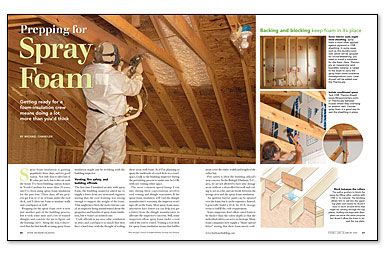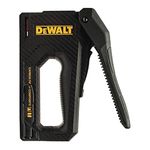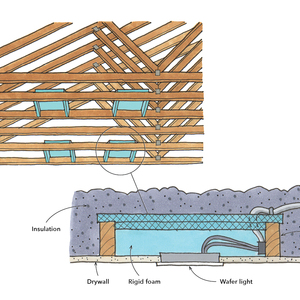Prepping for Spray Foam
Getting ready for a foam-insulation crew means doing a lot more than you’d think.

Synopsis: Installing spray-foam insulation is all about the prep work. Because North Carolina builder and designer Michael Chandler has been using spray-foam insulation in all the houses he has built for the past four years, he has learned to navigate the process. His first order of business usually involves getting clearance from building officials and inspectors, who sometimes are unfamiliar with the spray-foam process and might have concerns about ventilation and fire safety. Next, he installs extra backing and blocking to get the framing ready for the spray-foam installation. Because the spray foam sticks to everything, Chandler keeps plenty of crew members and drop cloths available to monitor the installation. Chandler suggests checking the foam with a depth gauge to make sure that the proper amount of foam has been installed. Finally, he advises that a spray-foam installation may require the use of a trailer-mounted generator.
Spray-foam insulation is gaining popularity these days, and for good reason. Not only does it offer lots of R-value per inch, but it also air-seals the house. I’ve been building custom homes in North Carolina for more than 20 years, and I’ve been using spray-foam insulation for the past four. These days, all my projects get 8 in. to 12 in. of foam under the roof deck, and I often use foam to insulate walls and crawlspaces as well.
Prepping for the spray-foam crew is now just another part of the building process, but it took some time and a lot of stained shingles and concrete for me to figure out the learning curve. Along the way, I discovered that the first hurdle in using spray-foam insulation might just be working with the building inspector.
Venting, fire safety, and building officials
The first time I insulated an attic with spray foam, the building inspector asked me to supply a letter from my structural engineer stating that the roof framing was strong enough to support the weight of the foam. That might have been the most extreme case of an inspector being misinformed about the properties and benefits of spray-foam insulation, but it wasn’t an isolated case.
Code officials in my area value ventilation in attics and crawlspaces so much that they have a hard time with the thought of sealing these areas with foam. So if I’m planning to spray the underside of a roof deck or a crawlspace, I talk to the building inspector during the permitting process to make sure he’s OK with not venting either space.
The most common speed bump I run into during these conversations involves roof venting and shingle warranties. If the spray-foam insulation will void the shingle manufacturer’s warranty, the inspector won’t sign off on the foam. Most spray-foam manufacturers have letters (or can help you get a letter) from the shingle manufacturer to alleviate the inspector’s concerns. Still, some inspectors allow spray foam under a roof only if the roof is vented. Venting a roof deck for spray-foam insulation means that baffles must cover the entire width and length of the rafter bay.
Fire safety is often the building official’s next concern. In the Raleigh-Durham, N.C., area, we are not allowed to have attic-storage areas without a drywalled firewall and ceiling to act as a fire and air break between the storage area and the spray-foam insulation.
An ignition-barrier paint can be sprayed over the foam, but it can be expensive. Instead, I generally build a 10-ft. by 10-ft. storage room to fulfill the code requirement.
Some inspectors don’t allow cured foam to be thicker than the rafter depth so that the individual rafters can serve as firestops. Many foam companies now supply a “flame-spread letter” stating that their foam meets code required flame-spread guidelines without an additional coating and at depths greater than the rafter depth. This letter is especially important when using a truss roof with 2×4 top chords.
For more photos, illustrations, and details, click the View PDF button below:
Fine Homebuilding Recommended Products
Fine Homebuilding receives a commission for items purchased through links on this site, including Amazon Associates and other affiliate advertising programs.

Insulation Knife

Loctite Foamboard Adhesive

Staple Gun

























